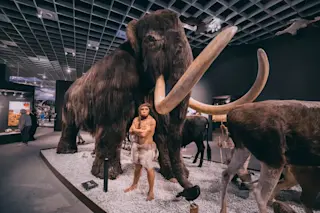Prompted by Andrea Mitchell's complaint that Iowa is not representative of America in racial terms the Audacious Epigone probed an American state's typicality in terms of racial demographics, using the overall American population as a measure. One of the major issues with judging the typicality of a given state is that there is a great deal of residential segregation in even "diverse" regions. This comes up in our personal choices too. In 2008 ~10 percent of non-Hispanic whites married someone who was not a non-Hispanic white. Obviously more than ~10 percent of the population, particularly in the prime marrying demographic, are non-Hispanic whites, so you're seeing a fair amount of homogamy. In some ways the homogamy is even more striking for minorities. ~31 percent of Asian Americans in this period married a non-Asian American. But, one has to keep in mind that using the American population as representative over 90 percent of the potential marriage partners are not Asian American!
The quest for a state that "looks like America" is understandable, but the reality of lived life is more complex. And not just in racial terms (e.g., the division in politics between the white suburbs of Maryland vs. Virginia on either side of D.C.). But keeping race in mind, one consistent finding in social science is that Americans actually tend to overestimate the number of minorities. Iowa is actually more typical than we think, despite the fact that it is not typical. In the year 2000 the General Social Survey asked respondents to estimate the number of various groups in the USA. The finding of a tendency to overestimate minorities, and underestimate non-Hispanic whites, was confirmed. But, I decided to break this down by demographic. The results are below in a table.
The first row are real counts from the 2000 Census. All the following rows are average estimates of a set of respondents in the year 2000.

As you can see when you add up the elements on the row margins you get more than 100 percent. Why? Because I'm averaging the responses of individuals, and they aren't talking to each other and figuring that you can't get more than 100 percent as a collective whole. Across the demographics there is an average underestimate in absolute values of non-Hispanic whites by 10 percentage points, and an overestimate of minorities (excluding Jews here) of about 15 percentage points. The differences from the real value though were consistent with the relationships of the real values. The correlations were almost around around 0.98, which means that rarely did you come out with a scenario where a demographic estimated 5 percent for blacks, and 25 percent for Hispanics. Rather, there was a consistent overestimate of minorities, and underestimate of whites.
Taking into account both over and under estimations it looks like those with at least college educations do the best (the number of Jews in the sample was rather small, so take it with a grain of salt). But even here there is a skew in numbers. Why does this exist? My own initial hunch is that the national media is very unrepresentative of America. Set in New York or Los Angeles they reflect the demographics of those regions. Or do they? I haven't watched much TV in a while, but I do recall the amusing reality that Seinfeld and Friends were set in New York, but minorities were very much token characters in the majority-minority city where the protagonists were resident. But, to be fair I think that may be a real reflection of lives lived, where different races and ethnic groups simply socialize with their "own" (in Manhattan the Upper East Side is ~85 percent non-Hispanic white, on an island that is ~50 percent non-Hispanic white, in a city that is ~33 percent non-Hispanic white).













